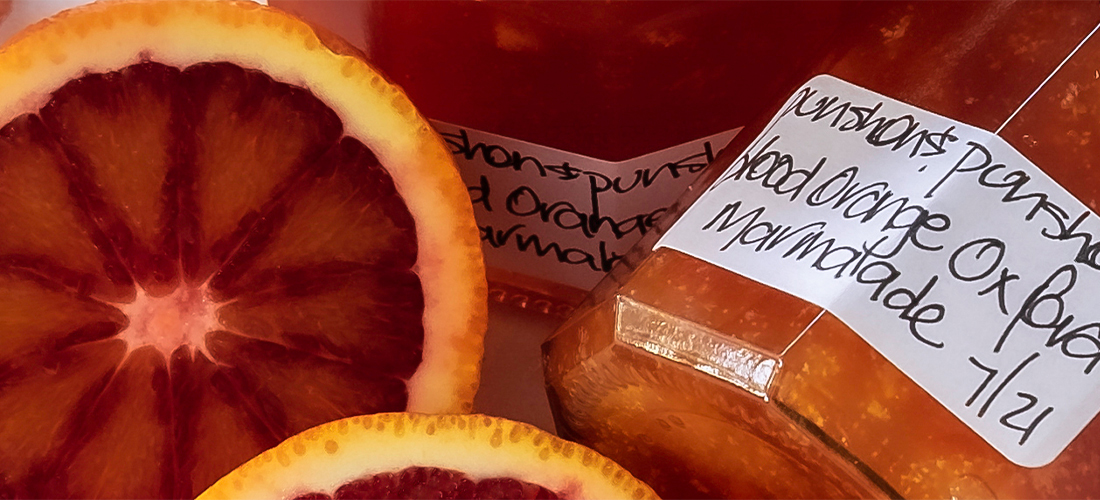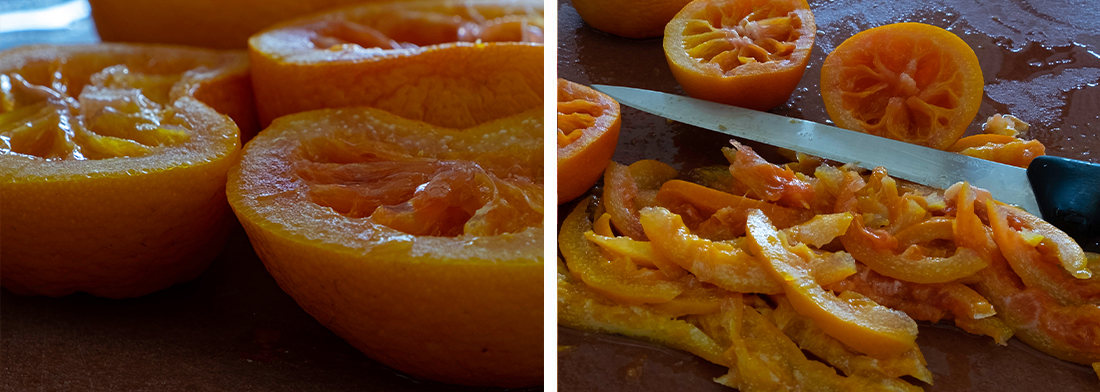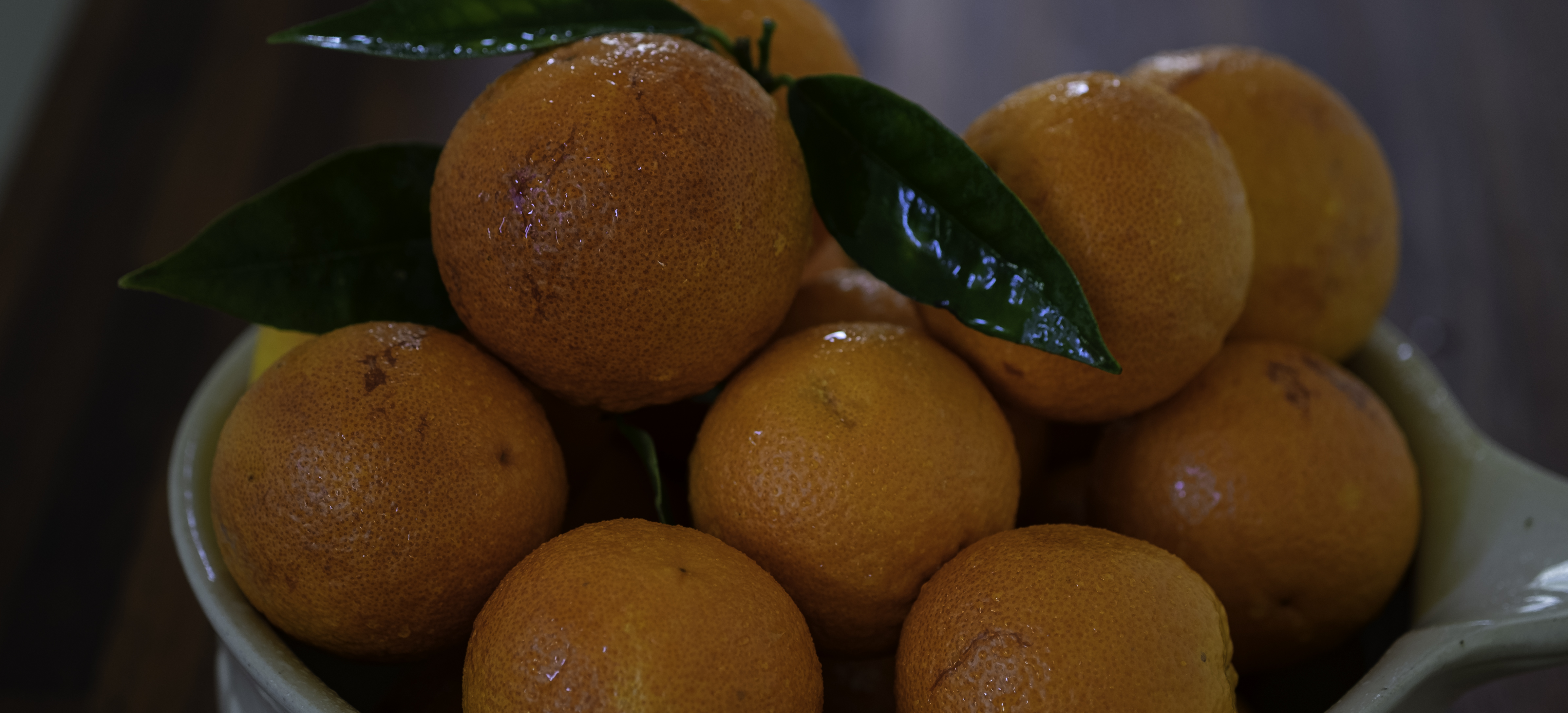Blood Orange Oxford Style Marmalade
- Jams, Jellies & Marmalades

Blood oranges, made in the Oxford style, produce a distinctive marmalade. Simmering the fruit whole is the secrete to producing a full-bodied preserve with a unique character. Combining this traditional marmalade method with blood oranges instead of Seville and replacing very dark and robust flavoured molasses with sugar breathes new life into Oxford Marmalade. It’s still richly coloured, thick, and chunky and a standout in the diverse stable of marmalade flavours and styles.
Traditional Oxford marmalade got its name as it was the preferred citrus preserve of the Oxford University Dons and students. They affectionately referred to it as 'squish'.
- Preparation Time:
- 30 minutes
- Cooking Time:
- 60 minutes
- Quantity:
- 9x 300ml jars
INGREDIENTS
- 12 approx
- Blood oranges, small
- 1
- Lemon, medium
- 2.5 litres
- Water
- 2.5 kg
- White sugar

METHOD
Wash the fruit skin to remove any garden debris or wax if they have been commercially grown. Wash the rosemary.
Place whole cleaned fruit in a large heavy bottom saucepan or preserving pan with water. Bring to the boil, cover with a lid, and allow to simmer approximately 30 minutes or until the skin is cooked. To test, squeeze a piece of peel between the thumb and finger. It should squeeze easily to a mush.
Remove the oranges and reserve the water. Cut the fruit into quarters, remove the pips, and put aside. Chop the fruit into equal sized pieces: either thick and chunky or smaller depending on your preference. Try to reserve as much of the liquid that comes from the oranges when slicing and place back into the preserving pan. While the oranges were cooking additional flavour and pectin from the skin, pith and seeds was extracted.
Make a pectin bag using the reserved pips. Refer the Notes section below for details.
Place the slice oranges, juice form 1 lemon, pectin bag in the preserving pan containing the cooking water and reserve juice from Step1.
Bring the mixture to the boil. Add a third of the warmed sugar. Stir to dissolve. Repeat this process two more times until all the sugar is added and dissolved. Bring to the boil and allow to boil rapidly for 10-20 minutes or until the setting point is reached. If it has not set continue to boil and keep checking every 2 minutes until it reaches the set point using either the flake or wrinkle test or until it reaches 105 C/220 F.
Stir occasionally to prevent the fruit from sticking.
Remove from the heat and place on a heat resistant surface. Remove the pectin bag. Discard the pips and recycle the material.
With a stainless spoon or any spoon that has a fine edge, skim the top of the marmalade to remove any scum that has accumulated during the cooking.
Allow to cool slightly for 5-10 minutes, then stir gently to distribute the peel evenly. Using a funnel, pour into dry warm sterilised screw cap sealable jars and fill to 2.5cm (1 inch) from the top of the jar.
-
Seal while the marmalade is hot. Label and store in a cool dark place in the kitchen or pantry.
Allow the marmalade to mature for at least 2 weeks before enjoying.
NOTES
- Use fresh citrus that have been recently picked as the pectin content is likely to be higher. Pectin is concentrated in fruit seeds, pith, and cores. Don’t discard them, as they are invaluable in jam and marmalade making as it is the ratio between the fruit acids, pectin and sugar that makes them set.
- To wash the fruit, I use a pair of Skrub’a vegetable gloves. These are a wonderful invention, made of a slightly course material that magically scrubs fruit and vegetables with the greatest of ease. Easy to wash and dry–they are an indispensable item in my kitchen. Special thanks to my very dear friend Sue who found them in a cookware shop. Alternatively use a kitchen vegetable brush.
- The pith of bitter oranges becomes translucent during cooking, the pith of other citrus fruits remains opaque.
- To make a pectin bag, drape clean sterilised calico or muslin cloth, approximately 200cm square, over a bowl. Place the seeds in the cloth. Gather up the ends and close the bag by tying it up tightly with smooth kitchen string. Allow plenty of room between the contents and tie point so the citrus water can bubble through the bag and extract the pectin from the seeds. It’ s now ready to use. Discard the seeds in the bag once it has been removed from the preserving pan. The cloth can be washed, dried, and kept for the next batch. My tea towel draw has a range of different size cloths that are on hand for my jam and marmalade experiments.
- To warm the sugar, put the recipe quantity an oven proof container and place in a preheated 120 degrees C oven for approximately 10 minutes. The sugar should be warm to touch, not hot. Warmed sugar, dissolves quickly and a rapid boil until the setting point is reached helps to preserve the fresh citrus flavour.
- If you don’t have a preserving pan, use large heavy bottom pot, preferably stainless steel. Ensure there is enough space available in the pot for the mixture to double in size while it is rapidly boiling.
- To test if the peel is cooked, squeeze a piece of peel between the thumb and finger; the peel should squeeze easily to a mush.
Happy marmalading

